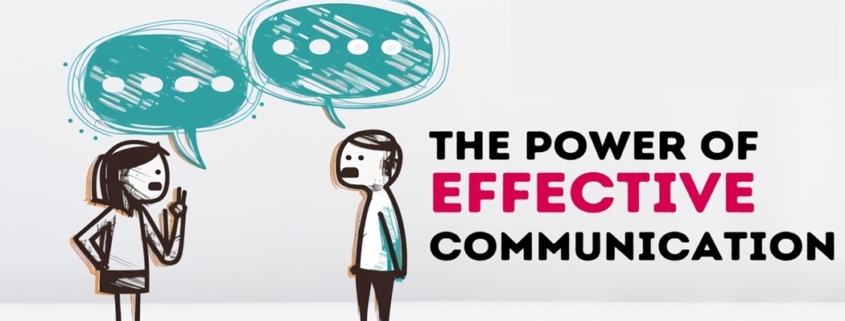The Power of Effective Communication: Igniting Success through Masterful Managerial Communication
In this article, we delve into the power of effective communication and its crucial role in igniting success through masterful managerial communication. We’ll explore the impact of communication breakdowns in the workplace and provide actionable tips for building and maintaining a culture of effective communication. We will also discuss common barriers to effective communication and strategies for overcoming them. By the end of this article, you’ll have a clear understanding of the vital role communication plays in leadership and why mastering the art of communication is essential for creating a thriving and successful organization.
Introduction

The Importance of Effective Communication in Management
Effective communication plays a critical role in the success of any management endeavor. Good communication involves the exchange of information and ideas between individuals or groups. It leads to a shared understanding. In a business setting, effective communication means that everyone is on the same page, working towards common objectives. Poor communication can lead to costly mistakes, misunderstandings, conflicts and missed opportunities for growth.
Managers who are skilled at communicating well can inspire their team members to work together effectively and achieve outstanding results. Effective communication can also contribute to increased employee satisfaction and retention. In today’s fast-paced business environment, where collaboration is key to innovation and success, effective managerial communication is no longer an option but a necessity.
Understanding the Different Types of Communication
The ability to communicate effectively is an essential skill for successful managers, but it’s important to understand that communication can take many different forms. Verbal communication is the most commonly used type of communication in management, but nonverbal communication plays an equally important role. Nonverbal cues such as facial expressions, body language, and tone of voice can all convey important messages.In addition to verbal and nonverbal communication, there are also written and visual forms of communication that managers must master. Written communication includes emails, memos, reports, and other documents that are used to convey information or make decisions. Visual communication includes charts, graphs, diagrams, and other visual aids that can help clarify complex information.
Understanding the different types of communication is essential for effective managerial communication. By mastering each type of communication and knowing when to use each one effectively, managers can ensure that their messages are received clearly by employees and stakeholders alike.
The Four Components of Effective Communication
Effective communication is the heart of successful managerial communication. It involves four key components and that must be well-coordinated to ensure that the message is conveyed effectively and accurately. The first component is clarity, which refers to how well you can articulate your thoughts and ideas in a way that your audience can easily understand. It involves using clear language, avoiding jargon or technical terms, and breaking down complex ideas into simpler concepts.The second component is relevance, which refers to the extent to which your message resonates with your audience. You need to tailor your communication style to suit the needs, interests, and concerns of different individuals or groups. This means being sensitive to cultural differences, adjusting your tone based on the situation, and using appropriate nonverbal cues.
The third component is timeliness, which refers to when you deliver your message. Timing is essential in ensuring that you capture the attention of your audience and hold their interest throughout the conversation. Whether it’s in a meeting or via email, make sure you communicate when people are most receptive. Lastly, effectiveness requires consistency – ensuring that both verbal and nonverbal communication align with each other-
The Role of Active Listening in Communication
The Role of Active Listening in Communication Effective communication goes beyond just speaking clearly and articulately. In fact, active listening plays just as important a role in the communication process. Active listening refers to the practice of paying close attention to what someone is saying and responding appropriately.
This type of listening involves not just hearing words, but also understanding their meaning and context. It requires being fully present in the conversation, asking relevant questions, and providing feedback that demonstrates understanding.
By mastering active listening skills, managers can improve their ability to communicate effectively with employees, colleagues, and stakeholders. This can lead to greater collaboration, enhanced productivity, and a more positive work environment overall
Communicating Effectively with Employees, Colleagues, and Stakeholders
Effective communication is essential in creating strong relationships among employees, colleagues, and stakeholders. It requires active listening as well as openness to feedback. Managers must provide clarity in expectations and objectives to avoid misunderstandings that may lead to conflicts. They should also encourage open dialogue where team members can express their concerns.
In communicating with colleagues, it is important to establish rapport and mutual respect. A collaborative environment fosters creativity and productivity as team members bring in diverse perspectives towards solving problems. Managers must be able to communicate effectively with different personalities and work styles.
Stakeholder communication is perhaps the most crucial element of effective communication. It involves sharing information about the organization’s goals, progress, risks, and opportunities with investors, customers, suppliers, regulators or any other parties that are critical to its success. By communicating clearly with stakeholders about an organization’s activities and performance levels can lead to improved relationships which can ultimately translate into enhanced reputation and financial success for the organization.




Leave a Reply
Want to join the discussion?Feel free to contribute!